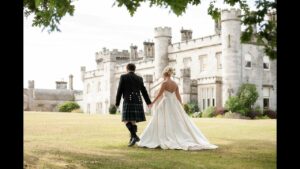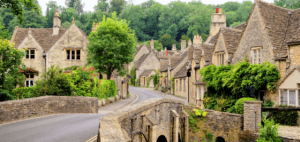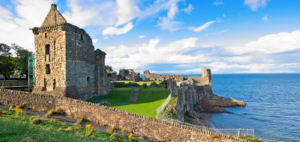The Interesting History of Galway throughout the centuries
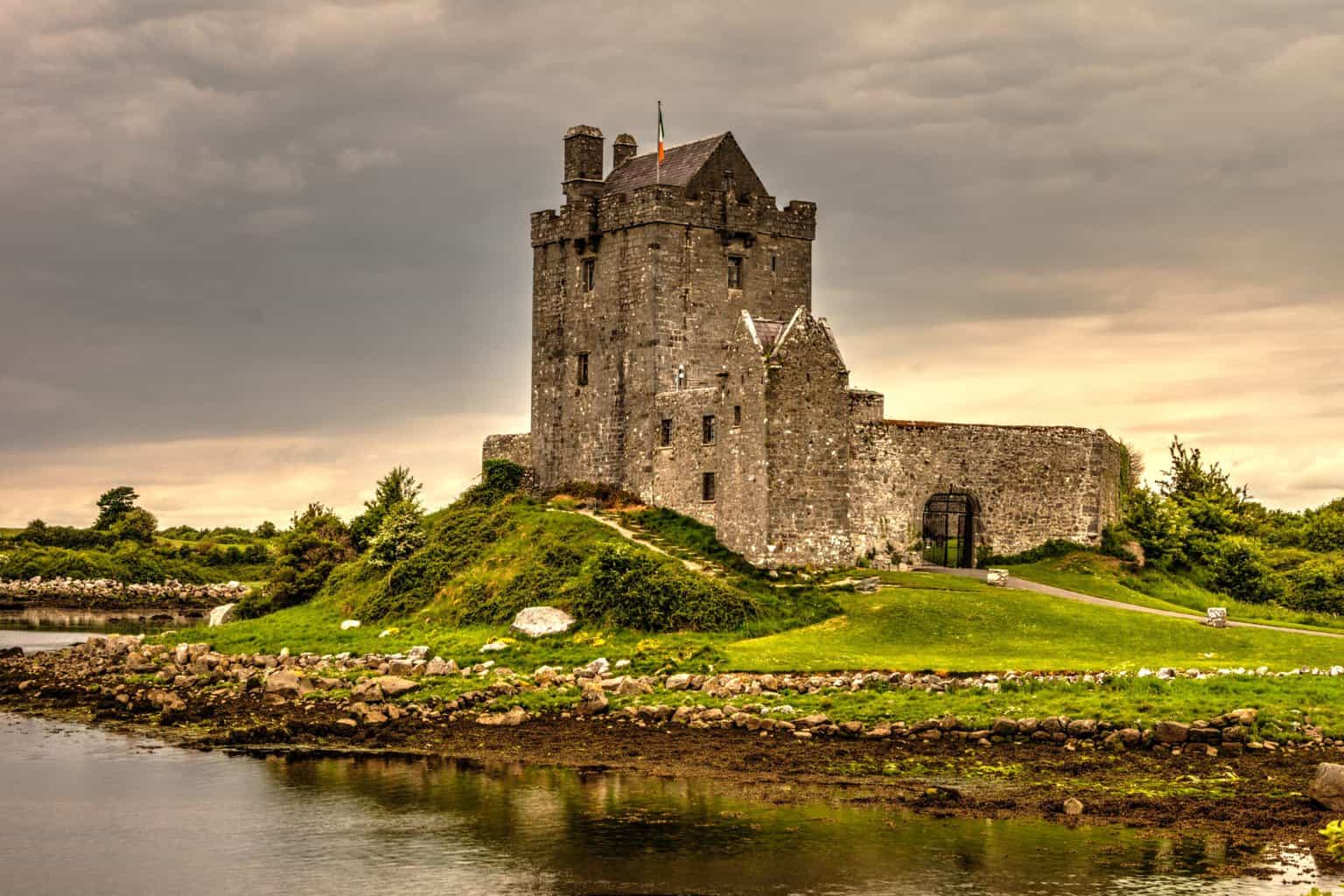
Updated On: April 15, 2024 by Ciaran Connolly
Galway is located in the West of Ireland and over looks the Atlantic Ocean. Today it is a city of culture and a popular tourist destination, with great music and entertainment. The entire county has become more modern while still embracing tradition and varies widely from place to place, from the bustling city, to beautiful beaches, rugged coastlines and green fields, Galway is a truly beautiful place to visit. Galway has a long history of innovation and has received a lot of multinational companies have chosen to set up in the area.
But how did the county and City of Galway become what it is today? The answer to this question lies in the past. The city has changed significantly since its foundation and has survived sieges, wars, famines and fires. In this article we will explore the history of Galway by creating a timeline of events that shaped the place we know and love today.
Galway is associated with sport – especially the GAA games of Gaelic football and Hurling as well as horse racing. It is also a hub for music, from aspiring artists busking on shop street to live traditional sessions in pubs around the county, there is something for everyone to enjoy. History and Art are valued highly by the people of Galway, and simply walking through the streets of the capital will prove it.
Galway is the name of a city and County in Ireland, which is a bit confusing! In this blog we will discuss the history of Galway city and the county itself.
The History of Galway Ireland, how it came to be and the most significant events that took place in the area will be examined. If you are looking for a brief history of Galway city and county that is still detailed and interesting, you have come to the right place! The history of Galway city dates back 800 years to the medieval period, but settlers arrived long before that.
History of Galway: Table of Contents
Why not skip ahead to a specific section of the article by clicking on one of the time periods below:
- History of Galway: Etymology of Galway
- History of Galway: Ireland’s First Settlers
- History of Galway: Mythological Characters from Connacht
- History of Galway: 12th Century Galway
- History of Galway: Medieval Galway to the Middle Ages – 14th to 16th Century Galway
- History of Galway: 17th – 18th Century Galway
- History of Galway: 19th Century Galway
- History of Galway: 20th Century Galway
- History of Galway: Famous People who made History in Galway
- History of Galway: Find out more Info
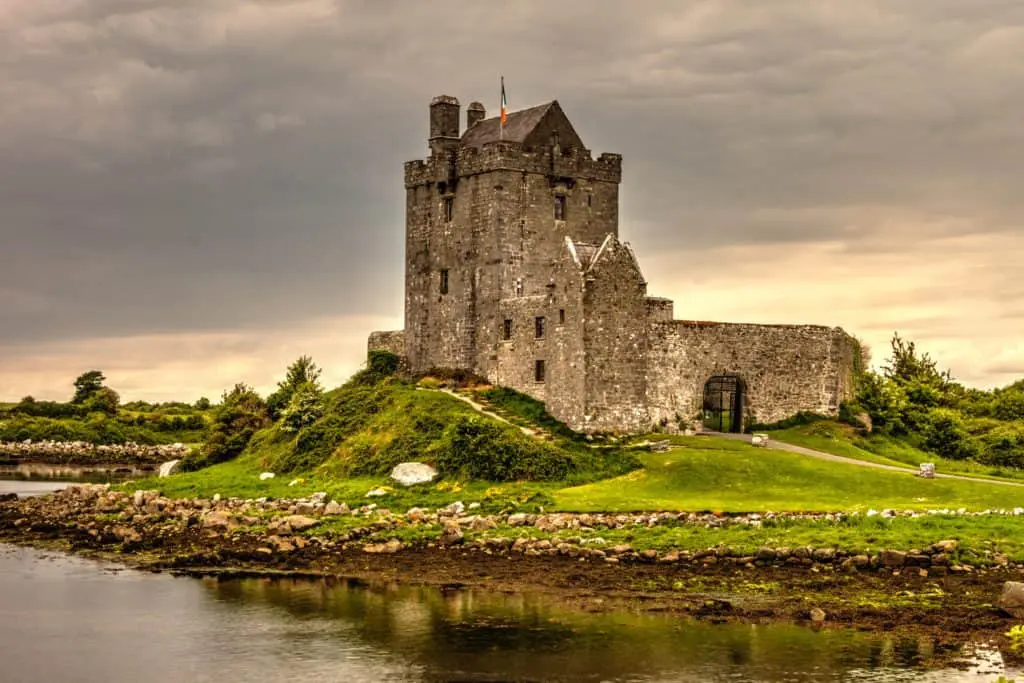
History of Galway: Etymology of Galway
Galway, or Gaillimh as it is known in Gaelic Irish was named after the river Gaillimh, and literally means ‘Stoney’ in English. Galway was previously known as Dún Bhun na Gaillimhe, which means ‘stronghold at the mouth of the Gaillimh’
Galway is part of Connacht, the Western province of Ireland. Originally it was called Cóiced Ol nEchmacht. Cóciced means the ‘fifth province’, ‘portion’ or simply ‘fifth’. Oln nEchmacht is believed to have been a reference to a tribe who occupied the area at the time.
During the medieval period it was renamed Connacht after the Connachta, a dynasty who named themselves after their alleged ancestor Conn Cétchathach, a legendary High King of Ireland.
If you want to find out more about the 32 counties of Ireland, why not check out our blog about the meaning The Names of Ireland’s 32 Counties Explained
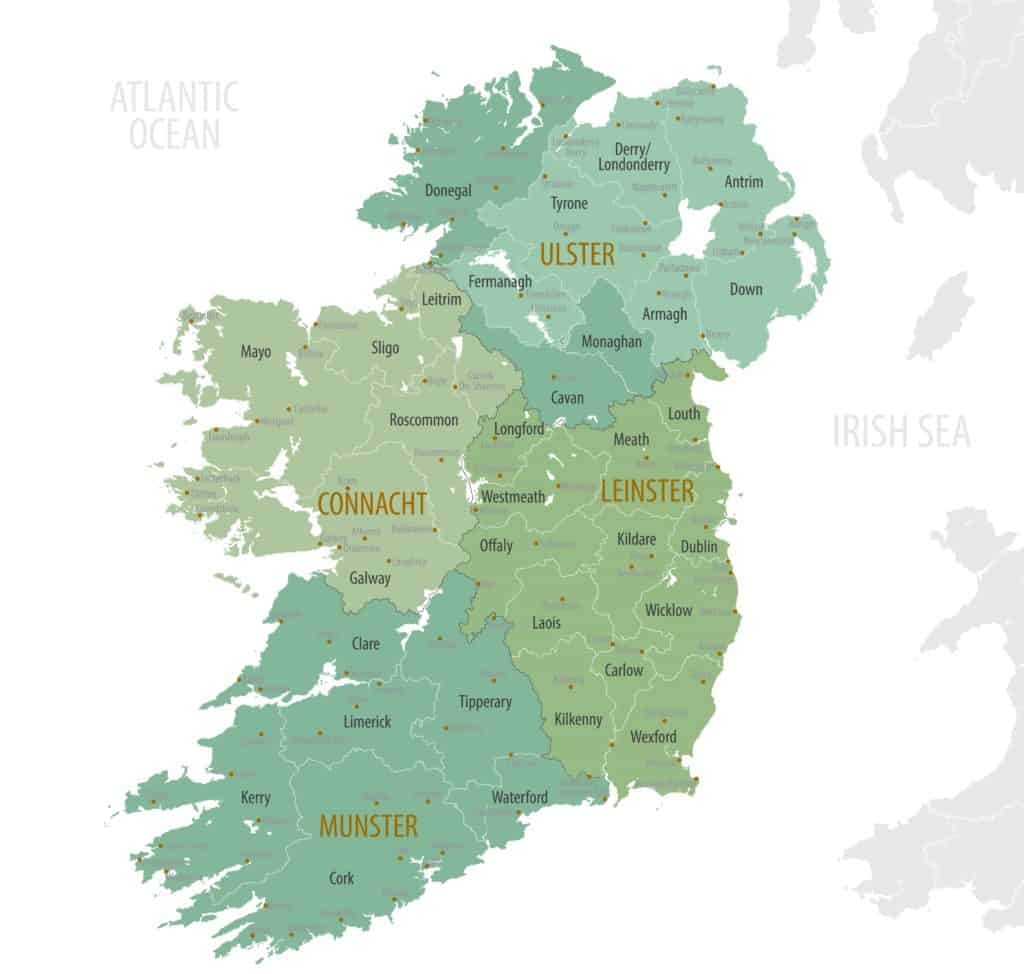
History of Galway: Ireland’s First Settlers
Ireland’s first settlers arrived around 4000BC during the Stone Age. They started farming during the late stone age which was about 2000BC. Before this the tribes were nomadic hunter gatherers and moved from place to place when they ran out of resources.
When the Neolithic people learned farming techniques they were able to set up permanent residence in a location, usually beside rivers which provided fresh water, fish and transport. Using stone tools the tribes were able to chop down trees and clear areas, farm animals and grow crops.
If you would like to learn more about Ireland’s first settlers, the Neolithic People (followed by the Celts) why not read our ultimate guide to Pre-Christian Ireland as told through the art, carvings and burial grounds that have been left behind today.
Artefacts recovered in the River Corrib and the surrounding area of Galway City suggest that people arrived in county Galway during the stone age.
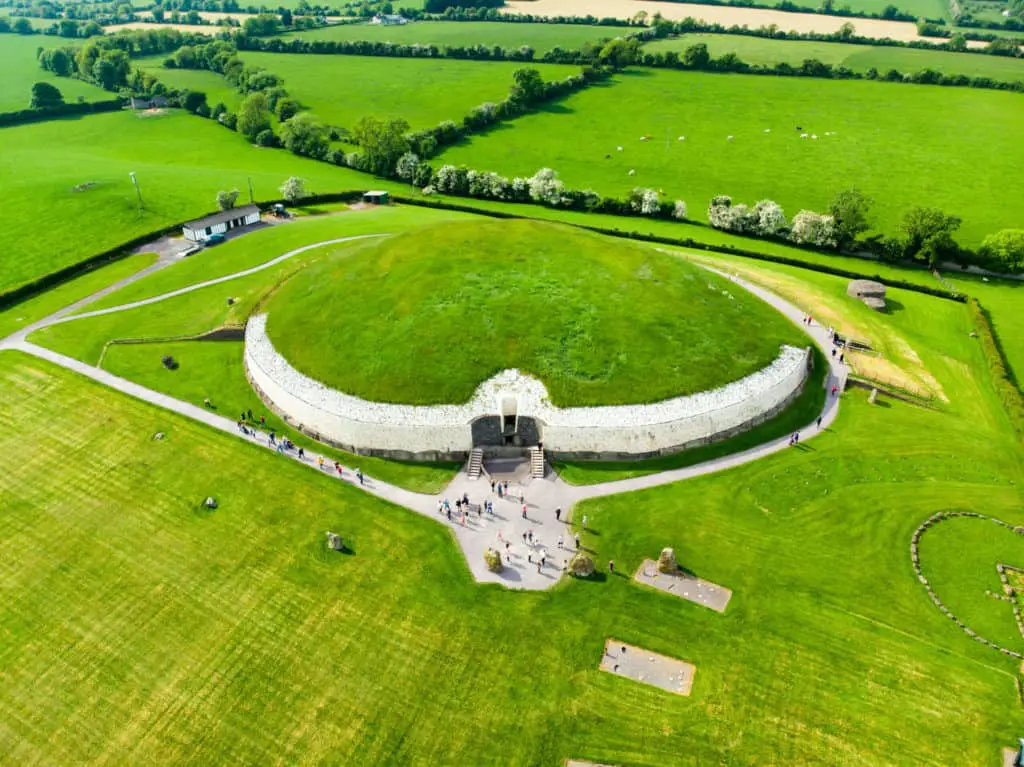
History of Galway: Mythological Characters in Galway
Irish mythology is broken up into four cycles, the Mythological Cycle, Fenian Cycle, Ulster Cycle and the King Cycle. Each cycle is comprised of similar stories in similar eras with varying degrees of myth and historical relevance. Kings and Queens feature in every cycle and naturally play an integral role in the aptly named Kings Cycle.
In Irish history kings were real life and legendary figures that appeared in mythological tales such as Queen Maeve of Connacht who featured in stories with the Tuatha de Danann, Ireland’s most ancient supernatural race. We have a blog about Irish Kings and Queens who changed history if you are interested!
Queen Maeve is usually associated with Sligo or Roscommon, but as Queen of Connacht she ruled over the entire west of Ireland including county Galway.
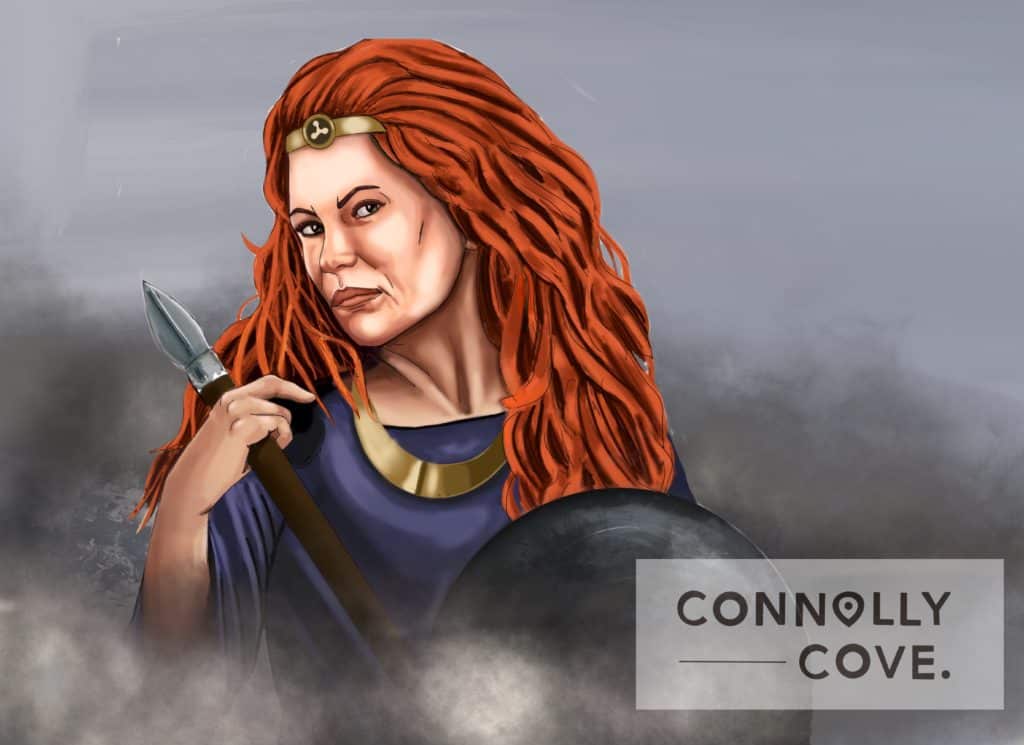
The most notable character with roots to Galway is Queen Medb of Connacht as we have already mentioned. In mythology Medb Lethderg is a sovereignty goddess associated with the Hill of Tara, the palace of the High Kings of Ireland. She was married to many kings, just like the Queen of Connacht. The two Medb’s are thought to be the same character. While Queen Medb of Connacht was more realistic and a more historical depiction of the character, the goddess was more fantastical.
This isn’t the only time where Celtic gods or goddesses had a human incarnate in Irish mythology. According to Celtic mythology Saint Brigit is the same person or at least a version of the goddess of fire and light Brigit. It is believed that her popularity as a pagan Goddess caused the monks to adapt her stories into suitable Christian versions instead of writing her out of history.
The King of Connacht Ailill mac Máta was one of Queen Medb’s husbands and the owner of the white bull that would cause the Cattle raid of Cooley, one of the most famous stories in Irish mythology.
History of Galway: Early Galway – 12th Century Galway
1124 Dún Bhun na Gaillimhe
Dún Bhun na Gaillimhe was constructed in 1124 as a naval base and military fort. Dún Bhun na Gaillimhe translates into ‘Fort at the Mouth of the Gaillimh’. The River Corrib runs into Galway and in the past forts were constructed on rivers because boats were the main form of transport.
The fort was constructed by the King of Connacht and High King of Ireland Tairrdelbach Ua Conchobair. The name Conchobair is actually O’Connor in modern Irish,. There were many battles for territory in Ireland during this time and the result of this was that the O’Flaherty clan took over the O’Connor’s fort.
1235 Richard de Burgo invaded the fort and the town wall was built
in 1235 Richard de Burgo invaded Connacht and captured the fort. It was de Burgo who built a castle and town walls to protect the settlement of Galway from future attacks.
It was tradition to build a castle after a land-grab to signify that the surrounding area was your property, but Walter, Richard’s Son had an even better idea. The de Burgo family built a wall around their land to further protect their claim, much to the anger of native families who lived in Galway before their arrival.
The town wall was financed by a trading tax on all goods brought into the town for sale. The town walls actually helped to prevent an attack from Red Hugh O’Donnell of Donegal in centuries alter 1597, and the inhabitants were willing to pay for their protection.
You can find many parts of the stone wall preserved today, even incorporated into Galway’s Eyre Square shopping centre!
O’Connor, Flaherty and Burke are still very common names in the Galway area, if this is your name you could be a descendent of some of Galway’s earliest rulers!
History of Galway: Medieval Galway to the Middle Ages – 14th to 16th Century Galway
1320: St. Nicholas’s Church was built
The town of Galway continued to grow and prosper into the 14th century. In 1320 St. Nicholas’s Church was built and it is actually still standing today.
St. Nicholas is actually the Patron Saint of Galway since the 14th century. He lived in Greece in the 4th century and is considered the patron saint of sailors, merchants and children, because Galway was such a prosperous merchant and sailoring town he seems like the most suitable pick for a patron saint.
1473: A fire almost destroyed the City
The city of Galway was almost destroyed by a fire in 1473. The city was then planned and rebuilt and many of the tribes created lavish houses such as Lynch’s Castle. Lynches Castle is the oldest building in Ireland still in daily commercial use and is the current location of Galway’ cities bank of Ireland.
1485: The first Mayor of Galway
Throughout the 15th Century Galway towns people were given more freedom and were given more control. One of these perks was that the Burke’s were no longer their lords; the people of Galway could elect their own mayor. Pierce Lynch was the first mayor of Galway and the Lynch family was one of the of the 14 tribes of Galway.
Galway had already been trading with England, but these newfound freedoms saw the city trading with Spain, Italy and the Middle East. While they were loyal to the king of England officially, Galway town had become independent similar to renaissance towns in Italy at the time.
Conversely these authorities were introducing bizarre and inconvenient by-laws accompanied with hefty fines for locals, which was unpopular to say the least.
The 14 Tribes of Galway
While Galway was still loyal to England and under their control officially, it was fourteen wealthy families who were considered the real power in first half of the sixteenth century. This was because they had control over the towns trade.
Many historians agree that the term ‘the tribes’ was not given as a compliment to the people of Galway, however Galway proudly embraced their heritage and the name itself, and to this day it is known as the city of the tribes.
The names of the family have been recorded in history and are as follows:
- Athy
- Blake
- Bodkin
- Browne
- D’Arcy
- Dean
- Font
- French
- Joyce
- Kirwan
- Lynch
- Martin
- Morris
- Skerrit
The families had a lavish lifestyle, the Lynch’s in particular built a tower house which is known as Lynch’s castle, but both the towns people and family tribes benefited from their economic relationship. The families spent money maintaining and repairing the town wall which protected the people inside, and in return the townspeople continued to trade with the families. The continued profits the 14 families wanted depended on maintaining the wall’s defensive capabilities.
During this time Galway was actually the principal Irish fort for trade with Spain and France.
1477: Christopher Columbus visited Galway
In 1477 Christopher Columbus actually visited Galway and recorded his trip.
1504 – The Battle of Knockdoe
The Battle of Knockdoe took place in 1504 near Knockdoe, which is close to Tuam, another major town in Co. Galway. It is a little known battle but it is often attributed to the decline of power of Gaelic lords in the West
1520: Dunguaire Castle was built
Dunguaire Castle was built in 1520 by the O’Hynes clan and overlooks Galway bay. Dunguaire castle is located in Kinvara Co. Galway. Check out the video below where we explore the castle!
History of Spanish arch Galway
The cities walls were extended as a measure to protect the cities quays, known as The Long Walk in 1584 into what is now known as the Spanish Arch, one of the most iconic locations in Galway city.
History of Galway: 17th & 18th Century Galway
1649: The Bubonic Plague
In 1649 the city of Galway was temporarily abandoned by many residents after the Bubonic plague was brought in on a Spanish ship.
Galway under Siege
The mid-17th century saw the Galwegians in a bitter 9 month siege against Oliver Cromwellian’s army. The Cromwellian army were unable to destroy or overcome the sturdy walls which had been fortified further in anticipation of an attack, so they laid siege on the town. This meant that they surrounded the walls of Galway and prevented commerce and communication with the outside world.
The town surrendered in April 1652, some of the 14 families escaped into the countryside where they had estates, and the majority of poorer townspeople were sold into slavery in the West Indies. Galway’s port, which was once a successful economic trade link with an ideal coastal location saw a decline that lasted many years after the arrival of the Cromwellian army.
Forty years later, in 1691 the next major attack was made on the town from the Williamite army after their success in the battle of Aughrim in 1691.
The Penal Laws
The Irish Penal Laws of 1695 were introduced which were attempted to force Irish Catholics to accept the Church of Ireland.
The laws were extremely restrictive and attempted to end Catholicism in Ireland. One of the most famous laws forbade Catholic schools or Catholic teachers from working in schools. In response to this the phenomenon of ‘Hedge schools‘ were born. The schools were called this because they were often taught on the side of roads in hidden locations due to the illegal nature of it. It was a form of rebellion seen as a way of preserving Irish culture, and while not exclusive to Galway, was most popular in rural areas.
18th Century
The 18th century saw more peaceful times as the Battle of Aughrim was considered the last great battle in Ireland. Aughrim is a village in county Galway and the Williamites had won this battle in 1691 before taking over the city.
While there were no major wars it was a century of great suffering in Ireland and Galway . There was a wealth imbalance, many of the upper class citizens were Protestant landlords who were now building beautiful townhouses instead of defensive castles.
This imbalance was aggravated by the Great Famine of 1845 when the potato blight saw as many as 1 million people die and another 1 to 2 million more emigrate to North America and Great Britain.
It is thought that the county Galway’s population fell from 440,198 in 1841 to 321,684 in 1851. This downward trend would continue in the following decades falling to 242,005 in 1881 according to the Census’s of Ireland during these years.
Galway, especially its remote towns and villages were some of the largest communities in Ireland where the Irish culture and language thrived. But with death and emigration targeting these rural communities in particular, the Great Famine caused a sharp decline of traditional Irish customs and the language began to die out.
History of Galway: 19th Century Galway
The 19th century saw the relaxation of the penal laws, the majority of which were removed in 1793, with the last significant laws being removed in 1829. They were all technically removed during the Government Act of 1920 which removed any which may have still been in existence.
Prosperity would return to Galway as railway lines were built connecting the city to other major places in Ireland in 1850. The creation of the ‘Queens university of Ireland’ in 1845, which is now known as University of Galway was another major boost to Connacht and provided a reason for young educated people to remain in the West for further education.
1868: Kylemore Abbey was built
Kylemore Abbey was originally built as a manor house in 1868 as a romantic gesture for his wife by Mitchell Henry, a wealthy doctor from London. They had spent time there in the 1840’s during their honeymoon and Henry admired the beautiful wilderness of the Irish countryside.
The building was sold to another wealthy family before being purchased by Belgian nuns whose original abbey was destroyed during WWII. They converted it into an abbey and it remained a Catholic school for girls for 90 years as both an international boarding school and day school for locals.
Since the 1970’s they have been open for public tours and nature walks for the flower garden and kitchen garden.
Kylemore Abbey is about 18km from the picturesque town of Clifden. Why not take a tour by watching the video below!
1869: The First Galway horse race
The first horse race was held in 1869 in Ballybrit Co. Galway. Simply known as the Galway races today, attending the festival has become an annual tradition for many and has evolved into a week of celebrations.
1882: The Maamtrasna Murders
Maolra Seoighe was a man from county Galway who was wrongfully convicted for the murder of a family of five in the town of Maamtrasna. Authorities believed the murder was the result of a local feud and ultimately 8 men were convicted and three hung, namely Maolra Seoighe, Pat Casey and Pat Joyce. Maolra was posthumously pardoned in 2018 and it was the first pardon in history for an event that happened before the formation of the Republic of Ireland in 1922.
The court case was proven to have used perjured evidence, it is believed key witnesses were bribed and although Maolra Seoighe spoke primarily in Irish, the trial was held in English with a lawyer who did not speak Irish. While there are other examples of injustice during this time, this is by far the most well known story.
History of Galway: 20th Century Galway
1912 – Galway’s connection to the titanic
The Titanic was built in 1909 and is mainly associated with Belfast. However the county of Galway has connections to the tragic ship. We will discuss some of the the people who were on the ship with Galway connections.
The director of the White Star Line, the company which owned the Titanic was the highest ranking member of the organisation to survive the disaster. His name was Bruce Ismay and he was born in Lancashire in England.
After facing the severe criticism after the tragedy, and although being cleared of any blame for the incident, Ismay was deeply affected and left London for rural Connemarra in Galway to escape the judgement and shame he felt.
Martin Gallagher was from Caltra Co. Galway and died on the ship while saving multiple women who were facing certain death by helping them onto lifeboats. He is considered a hero of the tragedy.
Eugene Daly was a talented piper and survived the sinking of the ship. Originally from Westmeath, Daly would end starting a life in New York before returning to Ireland and living in Galway.
Check out our guide on the Titanic Museum in Belfast if you are planning to visit the Titanic museum.
1916 – 1923 – Irish Easter Rising and War for Independence
Galway was the only county outside of Dublin to heed the call of their leaders on Easter Monday 1916.
The majority of historical events taking place from 1916 to 1923 took place in the East of Ireland in Dublin. There was a failed attempt by local members of the Irish Volunteers to attack the Royal Irish Constabulary barracks in Oranmore which is a town just outside of Galway city. The members surrendered in the town of Athenry.
From 1919 to 1921 Galway was the Western headquarters for the British Army during the Irish War for Independence.
World War II
About 210000 Irishmen volunteered to fight in WWII.
Well before WWII, the Republic Ireland had declared its neutrality and remained neutral throughout WWII. About 80,000 men and women joined the British Armed Forces for WWII. There is a recorded case of American soldiers crashing on the Galway-Dublin railway line in WWII as well as soldiers crashing at sea and making their way to the shores of Galway where the locals and medical professionals helped to nurse them back to health.
1960’s – The Plassey Wreck
During a stormy night in March in 1960’s Galway, a 600 tonne ship crashed onto the island of Inis Oirr where it remains today.
1965 – Galway Cathedral
Galway cathedral was consecrated in 1965 and is one of the newest stone cathedrals in Europe. It is a marvel of architecture and art with an impressive exterior and spectacular interior design. It is a popular tourist attraction and well worth a visit in our opinion.
1971: Fire in the City
In 1971 part of Galway’s city was destroyed by a fire, particularly the southern western corner of Eyre Square. You can read an official report from 1971 on the RTÉ archives. The cities Bank of Ireland was burned and relocated to Lynch’s castle in Eyre Square, the same castle that was built in medieval times.
1985: City Status
Galway became recognised as a city in 1985 and is considered both a city and the county town of Galway.
History of Galway: 21st Century Galway
Modern day Galway is a result of its history. The people of Galway have embraced and preserved the history of the area while evolving into a modern and international city.
History of Galway: Famous People who made History in Galway
Grace O’Malley: The Pirate Queen of Ireland (1530 – 1603)
Gráinne Ní Mháille or Grace O’Malley began her seafaring adventures at the age of 11. After her father refused to let her go on an expedition because of her long hair, the young girl chopped it off, gaining the name Gráinne Mhaol which actually means bald Grace.
Born in County Mayo, a neighbouring county of Galway in 1593, The Pirate Queen had a historic meeting with Queen Elizabeth I when her brother and sons were imprisoned. Grace successfully gained the freedom of the family on the grounds that she would not rebel against the crown. Grace would go on many expeditions from Galway in her lifetime.
Richard Joyce inventor of the Claddagh Ring – (1660-1737)
1700 saw the invention of the first Claddagh Ring, an iconic piece of Irish jewellery that has become an international symbol of love. The ring was first thought to have been invented by Richard Joyce, a silversmith from the seaside town of Claddagh Co. Galway.
Richard had a fascinating life, he was captured by pirates and sold into slavery where he worked under a goldsmith and learned the trade. When he was freed he returned to Claddagh and gave the first ever version of the ring to his future wife.
The Claddagh ring symbolises love, loyalty and friendship with the iconic design of a pair hands (friendship), holding a heart (love) with a crown on top (loyalty). Depending on what finger you wear the jewellery or if you wear it upside down can tell people a lot more about you than you may think.
You can find out more about the ring and Richard Joyce in our dedicated blog post about the origin of and meaning behind the Claddagh Ring.
Alice Perry 1885-1969
Alice Perry a Galway woman made history in 1904 when she became the first woman in the UK or Ireland to obtain an engineering degree.
Michael D. Higgins President of Ireland
Michael D. Higgins has served as the ninth President of Ireland since 2011 and is currently serving his second term of seven years having been re-elected for his second term in 2018.
Born in Limerick in 1941, Higgins would go on to study and eventually lecture in the University College of Galway. Before becoming the President of Ireland Higgins served as mayor of Galway of two separate occasions.
History of Galway: Find out more Info
Hardiman’s History of Galway is considered the definitive history of Galway City and County for readers looking for a more detailed historical guide.
Have we left out any interesting events in the history of Galway? Please let us know in the comments below!
Have you enjoyed our blog on the history of Ireland? Did you learn anything new or were you surprised by anything on our list? If you want to explore more of what Galway has to offer why not check out more articles about the city of the tribes such as:
30 of the best places to get food in Galway | The 25 Best Pubs in Galway City | Things to do in Galway: the Ultimate Guide | A Seasonal Guide of Events in Galway
On our site you will find plenty of articles about the history, mythos and culture of your favourite places in Ireland, as well as tourist guides for the Emerald aisle and rest of the World!



